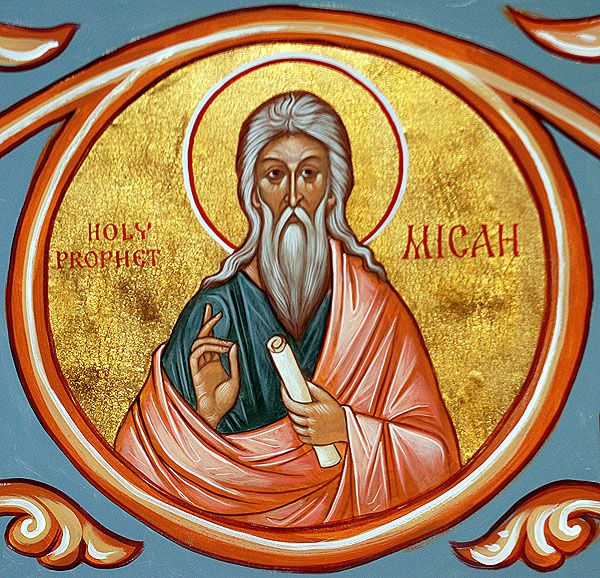Matthew's Hermeneutic and Micah

In this article, we dare venture back into the realm of hermeneutics. We have been introduced to hermeneutics and explored some practical uses of hermeneutics. We have also delved into Matthew 1:1-2:12 and used hermeneutics to look behind the scenes at the Christmas Story. It is unfair, however, to abruptly halt at Matthew 2:12. Matthew 2 contains four Old Testament references/allusions, none of which were treated previously. It is time we began a consideration of Matthew’s Old Testament connections in chapter 2, and this consideration starts with the prophet Micah.
Matthew 2:6 and Micah 5:2
In Matthew 2:6, we find a direct citation of Micah 5:2. Micah 5 is about a Shepherd-Ruler who will come forth from Bethlehem — a Shepherd-Ruler we know to be Jesus Christ. Micah 5 is in the broader context of Micah 4-5, and if we examined it in light of the whole book, we might say that Micah 4, 5, and 7 all come to bear on the argument of Micah 5. Because Micah 5 comes to bear on Matthew’s argument, we can say that one should have an understanding of Micah 4, 5, and 7 in order to understand Matthew 2.
While we cannot possibly explore the entirety of these three chapters (though I highly recommend you give them a read!), we must explore the imagery of Micah 5 as it relates to Psalm 72, Numbers 24, and Micah 7. Consider Micah 5:7-8:
Then the remnant of Jacob shall be in the midst of many peoples like dew from the LORD, like showers on the grass... And the remnant of Jacob shall be among the nations, in the midst of many peoples, like a lion among the beasts of the forest, like a young lion among the flocks of sheep, which, when it goes through, treads down and tears in pieces, and there is none to deliver. (Mic. 5:7-8)
Micah 5 and Psalm 72
In view here is the restoration of a remnant of Jacob. Of particular note is the dew/showers on the grass imagery similar to that in Psalm 72:5-7 (a passage which we considered in light of Matthew 1:18-20). Earlier, we determined that Matthew, through the Magi, is demonstrating Jesus to be the just Messianic Ruler anticipated in Psalm 72. Here, we find that Micah draws a parallel between the remnant of Jacob and the Messianic Ruler of Psalm 72. Yet, both Ruler and remnant are described with the same imagery. Indeed, Matthew may be showing us that there is a particular type of connection between the Messiah and His people. The experiences of the Messiah and the experiences of the people are intertwined and related — but we will see this fully fleshed out once we treat Hosea next article.
Micah 5 and Numbers 24
In addition to Micah’s link to Psalm 72, we find the lion/beast imagery similar to that in Numbers 24:7-8 (a passage which we considered in light of the star of Matthew 2). We considered before that Numbers 24 anticipates a star coming from Jacob. Numbers 24 relates how this Star will crush Israel’s enemies and will have dominion (Num. 24:17-19). Earlier in Numbers 24, we also learn that this Star is as a lion crouches and devours enemies (Num. 24:8-9). If we continue reading backwards through Numbers 24, we find that “God brings him out of Egypt,” (Num. 24:8a). Now indeed, we see striking parallels between the Star of Numbers 24, the Shepherd-Ruler of Micah 5, and the Child of Matthew 2. Matthew may be telling his readers that this Child is the One — He will come out of Egypt (Matt. 2:13-15) and will deliver Israel from her enemies, ruling her as a Shepherd in peace. Once again, we will see Numbers 23-24 further fleshed out when we consider Hosea 11:1 and Matthew 2:15.
Micah 5 and Micah 7
So, Micah 5 is synthesizing the imagery of these previous Old Testament passages. In Matthew’s mind, these prophecies are rich with Messianic expectation and are all connected. Micah not only synthesizes this previous imagery, but he also adds imagery of his own:
And he shall stand and shepherd his flock in the strength of the LORD, in the majesty of the name of the LORD his God. And they shall dwell secure, for now he shall be great to the ends of the earth. And he shall be their peace. (Mic. 5:4-5a)
In all this, Micah is anticipating the coming of a Shepherd. Chapter 7 expands upon this idea, as follows:
In that day they will come to you, from Assyria and the cities of Egypt, and from Egypt to the River, from sea to sea and from mountain to mountain. … Shepherd your people with your staff, the flock of your inheritance, who dwell alone in a forest in the midst of a garden land; let them graze in Bashan and Gilead as in the days of old. As in the days when you came out of the land of Egypt, I will show them marvelous things. (Mic. 7:12, 14-15)
This Messianic Shepherd-Ruler is involved in some exodus-like event. The remnant returns from Assyria and Egypt and once again comes under the Shepherd. That Micah now connects the Davidic Shepherd imagery to the exodus imagery not only pulls Micah’s argument together, but is used by Matthew to connect to his next citation: Hosea 11. We will follow up on how Matthew links to Hosea 11:1 in our next article. Stay tuned!